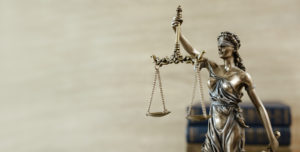
The Catholic church has watched as corruption entered its walls.
Human nature has always been weak; but Cardinal Pell, celebrating Mass at Christendom College in Front Royal, Virginia, believes the problem worsened with the breakdown and moral confusion in society.
Trying to put the best spin on the subject, Pell said, “Most of the abuse, at least in the English-speaking world is not in the strictest terms pedophilia, but rather ephebophilia.
“I also think it is linked with false views of conscience where people believe you can choose for yourself.”
Vatican’s Response
The United Nations has denounced the Vatican for embracing strategies which allow clerics to sexually molest multitudinous of children.
Pope Francis has stated that the Church’s credibility depends on end the abuse and perpetrators must be sanctioned.
The sexual exploitation of minors was not discussed publicly before the 1970s. It wasn’t until the 80s that the initial cases of child molestation, by clerics, was revealed.
It was well into the 90s, before widespread abuse in Ireland was revealed.
At the turn of the millennium, more than twelve cases of abuse were revealed.
Two significant articles into Irish accusations of pedophilia in 2009 exposed the degree of abuse and cover-ups. In one, four archbishops were affirmed to have directed a blind eye to abuse claims from 1975 until 2004.
In America, the Boston Archdiocese was hit the worst. Two priests, Paul Shanley and John Geoghan, along with Cardinal Bernard Law quit over the disgrace.
In Mexico, Marcial Maciel, originator of the Legion of Christ and long favored by Pope John Paul II, was the recipient of Vatican discipline over the exploitation of children over a 30-year stretch.
Since his selection in 2013, Pope Francis has tried to appear to give fresh hope. He has issued a request for work on sex abuse inside the faith and set up a Vatican commission to fight sexual abuse.
In a paper by Vatican Radio, the Pope pleaded for mercy for the “evil” damage to kids created by sexual abusers amongst the clergy.
When the scandals began to emerge in 2001, the Vatican published guidelines for the priesthood on how to manage guilty priests. The guidelines called for all cases to be referred to Rome. Prior to that, all matters had been handled in the concerned country where the abuse transpired.
Following a rise of fresh claims in 2010, the Vatican circulated new precepts calling for bishops to notify presumed instances of abuse to local law enforcement.
Victims’ organizations have reacted with doubt.
Responding to the United Nations announcement in February, Barbara Blaine, president of Survivors Network of those Abused by Priests, stated it was apparent the Vatican had put the character of Church officials before child protection.
“Despite the rhetoric from the Pope and other officials, they refuse to take the action needed to make this stop,” she said.